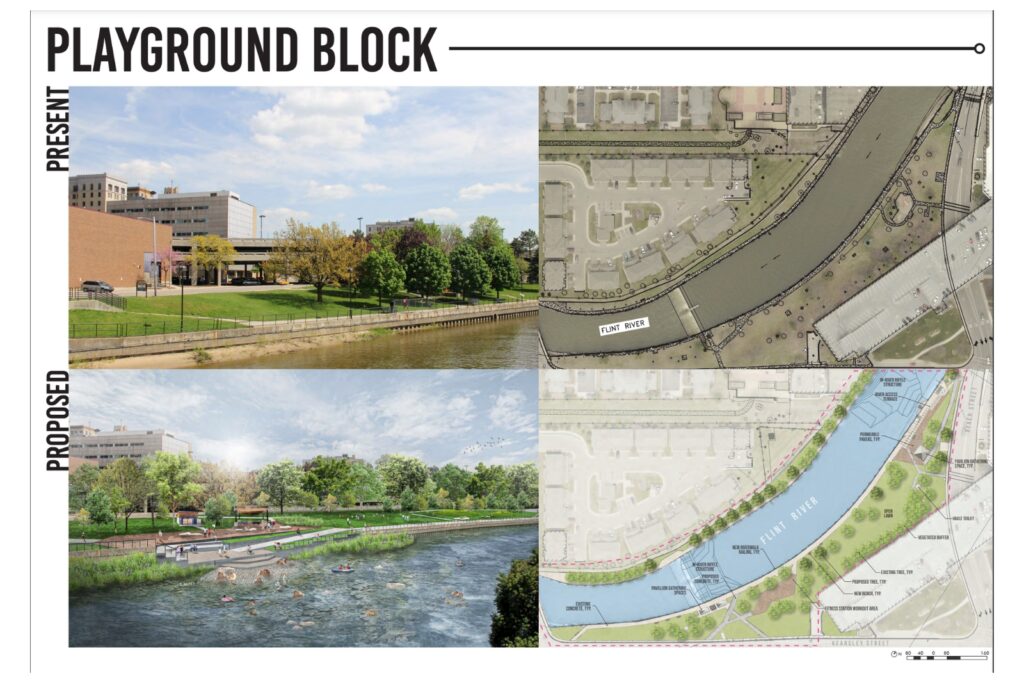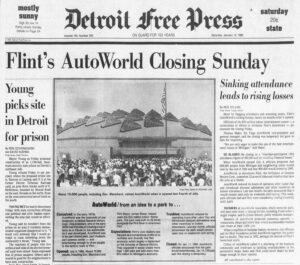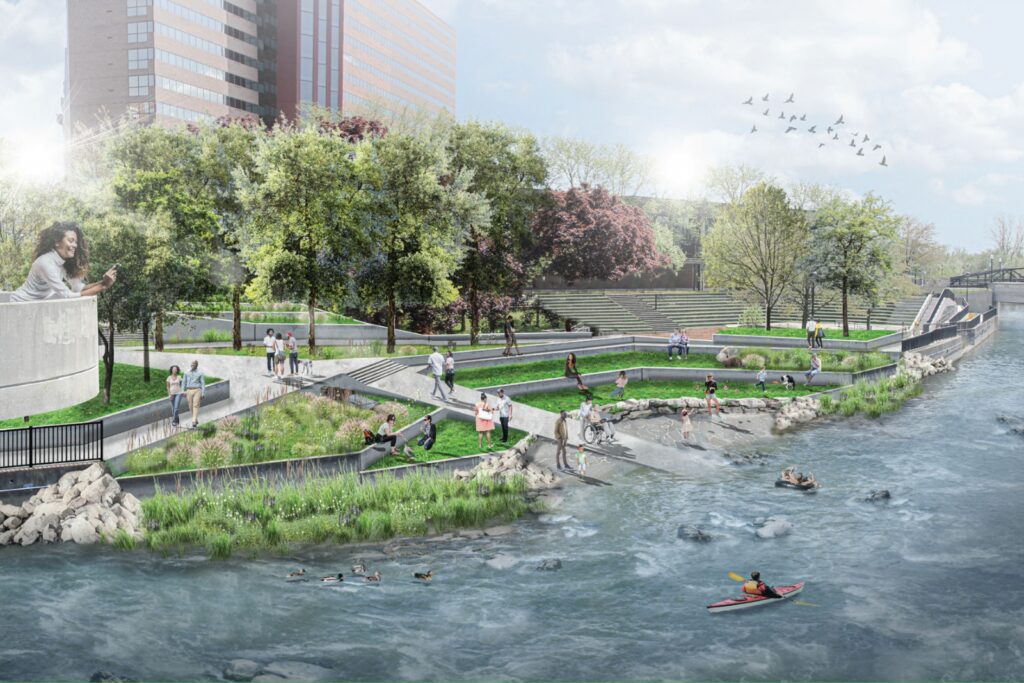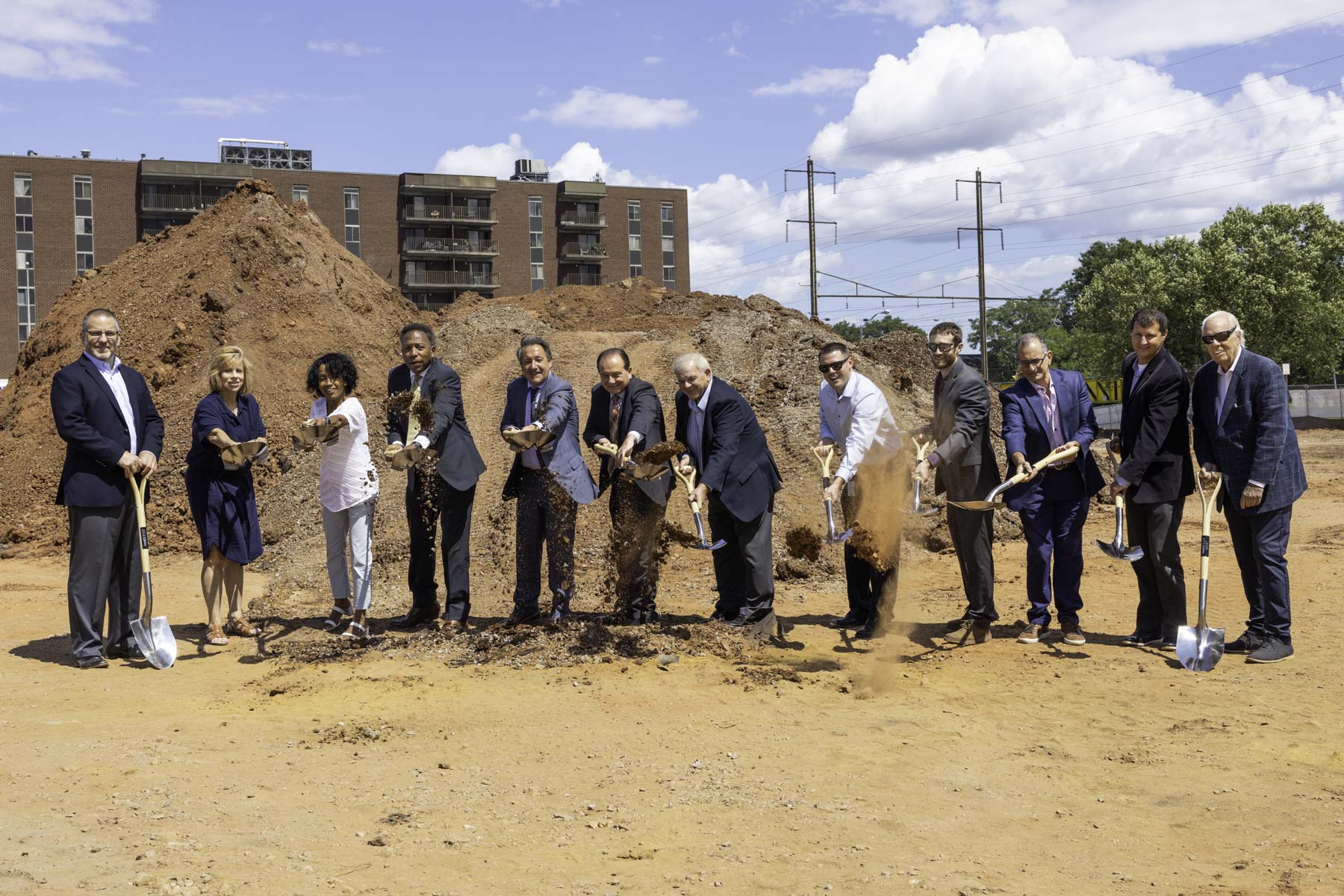FLINT, Mich. — “What’s the catch?” That’s the common refrain in Flint when a new project is introduced, and a $30.2 million riverside state park is no exception.
In the wake of the auto industry’s abandonment of the “Vehicle City,” it’s a challenge for residents to remain optimistic about the latest project to “bolster local economies” and “enhance tourism.”
The Michigan Department of Natural Resources (DNR) announced in March that Flint would be getting a 230-acre state park, originally proposed at $26.2 million. If the plan failed, it would prove skeptical Flint residents right.
The park’s centerpiece, stretching three miles east to west of town, is the Flint River. The river made national news in 2014 as the catalyst for Flint’s water crisis, a tragedy that has made it difficult for residents to imagine a future where they can celebrate the river that poisoned so many.
Flint’s state park project, funded by the state and endorsed by local officials, asks Flinters to trust their government that this will be in their best interest, a trust that was broken during the water crisis.
Ironically, the crisis was caused by that very same river, when city officials switched Flint’s water source from Lake Huron to the Flint River to save money until the new pipeline was completed. Using the Detroit pipeline 70 miles away was expensive, and local officials grew desperate for a timely alternative. This error exposed 99,000 people to lead at toxic levels, the effects of which they will experience for decades to come.
In the tumultuous years following Flint’s peak as an auto-making powerhouse in the 1960s, many have left the city in search of new employment opportunities. Residents in the 50s and 60s saw massive success in the automotive industry at General Motors, founded in Flint in 1908. GM quickly became the top job supplier to Flint residents, and still is, though the number of jobs has fallen from 80,000 to 7,500 today.
As recently as 1980, Flint had the highest median income in Michigan, and the highest median income for young workers in the country, mostly thanks to GM. Median household income and total population plummeted following GM’s departure from Flint, and by 2016, Flint had the highest poverty rate — 45% — among U.S. cities with at least 65,000 residents, according to data from the U.S. Census Bureau.
Flint’s nosedive divided residents into two groups: those who would leave, and those who would stay.

[Credit: Michigan DNR]
Patty Warner, a Flint resident for 48 years and counting, was one who stayed. Rather than looking outside of the city for fulfillment, she chose to focus on the positive in Flint. A resident of the Glendale Hills neighborhood west of downtown, Warner crosses a small bridge over the Flint River every day to walk in Mott Park.
Today, she will walk to Mott Park for a new reason—to attend an open house—and she will not let the ghosts of her city’s past stop her from celebrating the news: a massive state park to be built in Flint, encompassing all major parks and industrial sites along the Flint River.
Governor Gretchen Whitmer first announced her Building Michigan Together Plan in June 2021, “a $250 million investment to modernize state parks and trails,” according to a press release from the Michigan DNR. Not long after, Whitmer announced that a sizeable portion of that money would be allocated for Flint’s state park expansion, which would include five existing parks and three trails, including Chevy Commons, Mott Park, and Riverbank Park.
It was a big move for the state to funnel this much money to Flint. Genesee County, home to 17 towns including Flint, is currently the only county in Michigan without a state park. The two second-biggest projects in Whitmer’s plan earmarked $8 million to resurface hiking trails in tourism-friendly parks. Flint’s designation of nearly four times that, $30.2 million, was a Cinderella moment.
“I was skeptical at first, we all were,” Warner said prior to the meeting. “No one was sure how it would be handled. There’s a lovely meadow in Chevy Commons I walk through and I was worried they would put cement there instead.”
Fool me once
Flinters’ skepticism was not without reason. The city has a rocky economic history, funding projects like AutoWorld on a whim to recoup money lost to the massive restructuring of the auto industry, then shutting them down when they failed to generate revenue.

[Credit: Detroit Free Press Archive]
This $80 million project, financed with $36.5 million in public funds and $24 million from local donors and businesses, including $1 million from GM, proved to be an immediate commercial failure, at the expense of residents who were sold a dream and had to pay for it as their city fell deeper into debt.
Flint residents also remember times when the government acted against their best interest to help their bottom line. From 1998 to 2016, the Michigan state government had the opportunity to bail out Flint and Detroit by diverting $5.5 billion in funds through revenue sharing. Instead, the money was used to pad their own budget, costing Flint an estimated $55 million in funds.
To put this in perspective, during this period, 45 states increased revenue sharing to their ailing cities by 48% on average. Michigan’s government cut this funding by more than half, the highest reduction in the country by a margin of -43%. This devastated Flint, a city that had already lost 150 businesses from 1998 to 2013.
“We’ve had our hearts broken a time or 20,” said Tony LaBrie, host of Flint rock radio station Banana 101.5. “It makes sense [that] not everyone would be jumping up and down for news like this. But at the same time it’s like, come on people, it’s a park! What’s there to be so angry about?”
LaBrie saw this anger firsthand from Flint residents in response to his own article on the park. Comments on Facebook ranged from legitimate concerns to the bashing of a city that has been, historically, an easy target.
Pessimists or realists?
As many noted on Facebook, photos of the renderings are idealistic at best. The Flint River today is a sickly beige color. However, in the state park renderings, it boasts a crystal blue hue, complete with kayakers and families wading in from the beach, activities that at present are impossible, or at least cautioned against by health professionals.
ABC12 WJRT-TV also posted a state park article, triggering an onslaught of negative comments. James Reid from Flushing, a neighboring suburb northwest of Flint, left one of his own.
“Nice potential here, and a great ambitious idea — but gonna be a swing-n-a-miss [sic]. That river is beyond polluted,” Reid wrote. “Need to get a system in place to clean the river up first. Only then can this idea succeed, in my opinion.”
Warner pushed back on this idea. “Flint is all about naysayers, they’ll always have something to say when something’s being changed,” she said. “People say ‘wow, they’re not even fixing the water?’ But they don’t realize this is special funding we got to rebuild the parks.” To Warner’s point, many comments suggested that Flint’s water be fixed with this money instead, but as the money comes from President Biden’s American Rescue Plan and was designated specifically for parks, that is not possible.
A sense of security
Warner said her skepticism dissipated after attending the open house at Mott Park’s Clubhouse. Following its closure in 2009 due to a lack of maintenance, the Clubhouse reopened in June 2022. Residents now take turns mowing and maintaining the area. “Volunteers spent their own money to rebuild the park,” Warner said. “So we were all nervous that the state’s plans would undo their hard work.”
Warner was surprised to see state officials present, along with the Michigan DNR. She even met with the designers of the park renderings. “They were just lovely,” she said of the drawings. “It wasn’t all cement, it was just a massive state park, maintained by the city, with park rangers.” The park rangers element put many residents at ease, as security is a concern considering the high crime and low upkeep of Flint’s current parks.
The city’s parks are currently isolated from each other, but the renderings paint a more cohesive picture of Flint. Residents would be able to ride their bikes from the neighborhoods to the parks. Warner makes the hike to Stepping Stone Falls often, and she was impressed by this design. “Finally, I thought, okay, I’m a believer now. They’re not gonna bastardize the place. It’s in good hands now,” she said.


